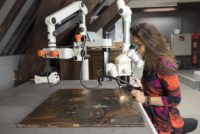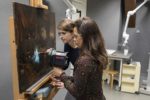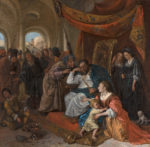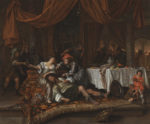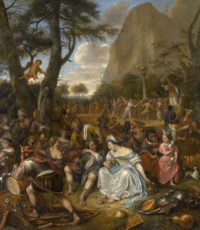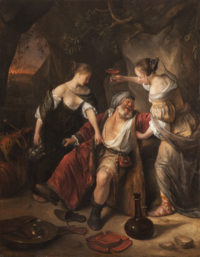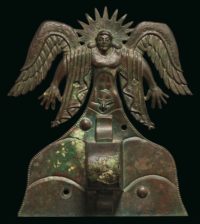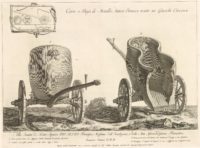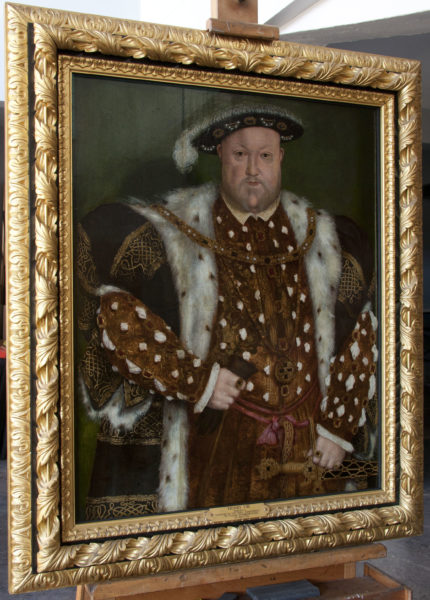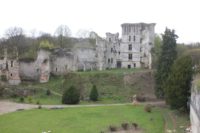 The Château de Tancarville, a historic castle near Le Havre in Normandy largely built in 18th century incorporating remnants of earlier structures going back to the 11th century, is in a parlous state. The current owners, an association of a dozen footballers chaired by midfielder Rémi Gomis, now a member of the Swiss team FC Wil, acquired it in 2013, receiving a tax exemption from the government premised on the stipulation that they would see to its renovation. The idea was to convert the remains into rental apartments.
The Château de Tancarville, a historic castle near Le Havre in Normandy largely built in 18th century incorporating remnants of earlier structures going back to the 11th century, is in a parlous state. The current owners, an association of a dozen footballers chaired by midfielder Rémi Gomis, now a member of the Swiss team FC Wil, acquired it in 2013, receiving a tax exemption from the government premised on the stipulation that they would see to its renovation. The idea was to convert the remains into rental apartments.
It didn’t happen. Nothing has happened. The town hasn’t heard from these guys since early 2017 when a law firm representing them made contact. Since then, it’s been complete radio silence as the castle falls to pieces.
The silence of the owners worries the mayor even more as the site is gradually deteriorating: wild vegetation, unsecured wells, stones that gradually break from the medieval ruins … [Mayor] David Sablin had to take measures to ensure the safety of places.
“The town hall has filed a prohibition order to the site, with its main access. We also contacted the prefect of Seine-Maritime, to consider a danger and order the owners to act quickly on this listed building.”
Left without maintenance, the remains dating back to the 12th century deteriorate. Below the rocky outcrop, the parking of a carpool area is threatened by falling rocks. Finally, regular intrusions on the site have been noted. Sometimes devastating for this heritage at risk.
Jean-Loup Diviné, president of the association of the Friends of the Castle of Tancarville, is also in constant fear at the deterioration of the site.
“On the weekend of January 30, people again got into the castle and tore stones off the ruins. The association has repeatedly placed locks to close access to the castle, but they are regularly demolished. There is a complete lack of reaction from the owners and if we do nothing, there will be nothing left of the site in a few years.”
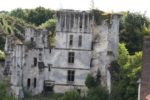 The first castle built on the picturesque and easily defensible site, a spur overlooking the Seine, belonged to Raoul de Tancarville, chamberlain of William the Conqueror. All that remains today of that castle is the square tower. Subsequent Lords of Tancarville rebuilt it and added to it. A 15th century chapel survives, but the bulk of what remains today was the new castle built on the ruins of the medieval one from 1709 to 1717 for Louis Henri de La Tour d’Auvergne, Count of Évreux. (A few years later Louis Henri would have a Paris crash pad built then known as the Hôtel d’Évreux and now known as the Élysée Palace, official residence of the President of France.)
The first castle built on the picturesque and easily defensible site, a spur overlooking the Seine, belonged to Raoul de Tancarville, chamberlain of William the Conqueror. All that remains today of that castle is the square tower. Subsequent Lords of Tancarville rebuilt it and added to it. A 15th century chapel survives, but the bulk of what remains today was the new castle built on the ruins of the medieval one from 1709 to 1717 for Louis Henri de La Tour d’Auvergne, Count of Évreux. (A few years later Louis Henri would have a Paris crash pad built then known as the Hôtel d’Évreux and now known as the Élysée Palace, official residence of the President of France.)
 The castle’s revival was cut short by the French Revolution. It was pillaged and sacked to the point of near-destruction. By 1793, it was in ruin. With the restoration of the monarchy in the 19th century, the castle’s fortunes took a positive turn. It was restored for the Count Leonce of Lambertye, a preeminent gentleman botanist whose books were widely read in scientific circles, in the mid-1800s. It was listed by the French government as a historic monument in 1862.
The castle’s revival was cut short by the French Revolution. It was pillaged and sacked to the point of near-destruction. By 1793, it was in ruin. With the restoration of the monarchy in the 19th century, the castle’s fortunes took a positive turn. It was restored for the Count Leonce of Lambertye, a preeminent gentleman botanist whose books were widely read in scientific circles, in the mid-1800s. It was listed by the French government as a historic monument in 1862.
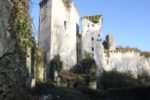 Staring in the 1990s, the castle passed through numerous hands. It has at various points been a private home, an art gallery and a restaurant. The sale to the association was a Hail Mary pass, a less than ideal plan for the preservation of the architecture, but the only option left that would keep the walls up in some form. Now that those hopes have proved vain, the Friends of the Castle of Tancarville have reached out to journalist, television and radio presenter and expert in royal families Stéphane Bern who has recently been charged by President Macron with creating a list of monuments and historic structures in France that are in particular peril and helping to secure financing for desperately-needed repairs. Inclusion on that list, or even just getting the word out on a national stage, might spur the owners into actually keeping to the terms they agreed to when they bought the property.
Staring in the 1990s, the castle passed through numerous hands. It has at various points been a private home, an art gallery and a restaurant. The sale to the association was a Hail Mary pass, a less than ideal plan for the preservation of the architecture, but the only option left that would keep the walls up in some form. Now that those hopes have proved vain, the Friends of the Castle of Tancarville have reached out to journalist, television and radio presenter and expert in royal families Stéphane Bern who has recently been charged by President Macron with creating a list of monuments and historic structures in France that are in particular peril and helping to secure financing for desperately-needed repairs. Inclusion on that list, or even just getting the word out on a national stage, might spur the owners into actually keeping to the terms they agreed to when they bought the property.
